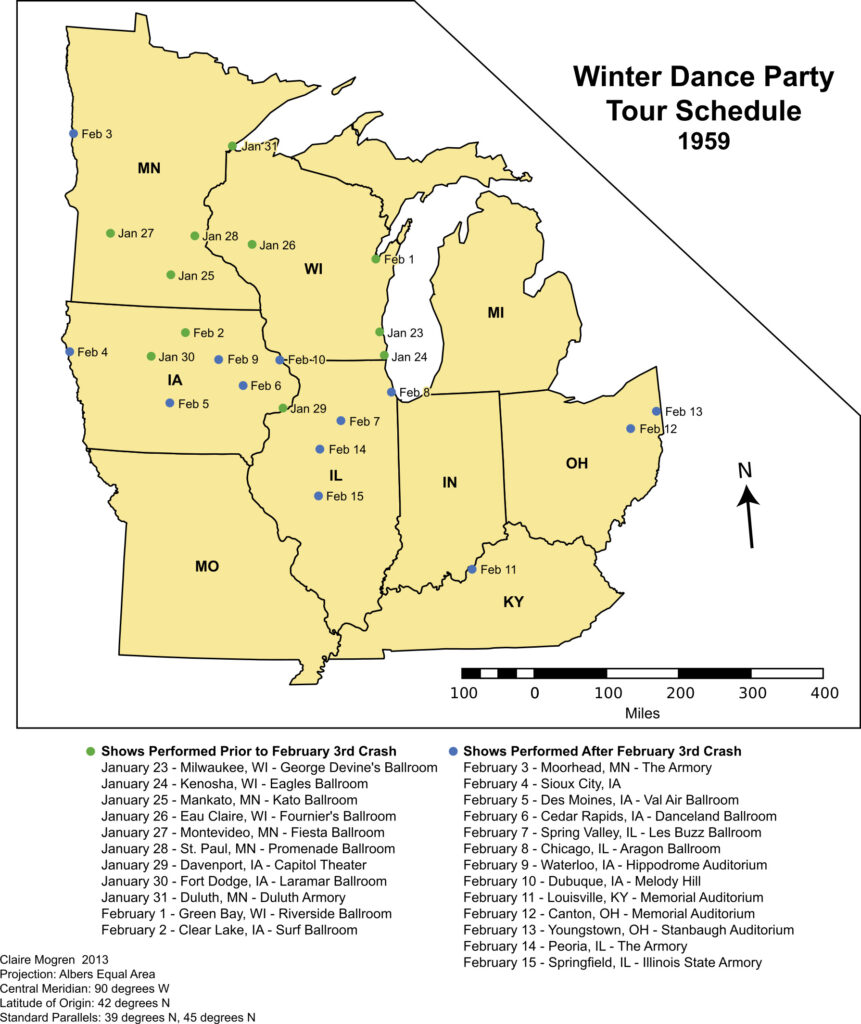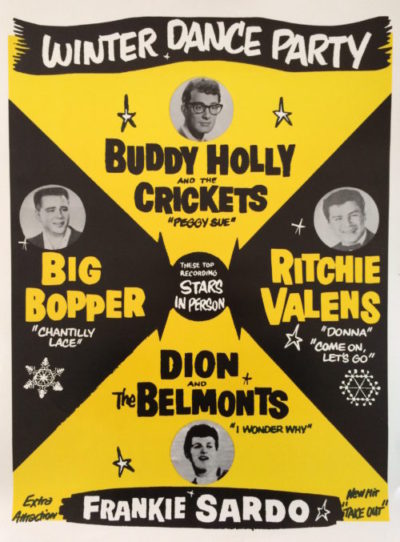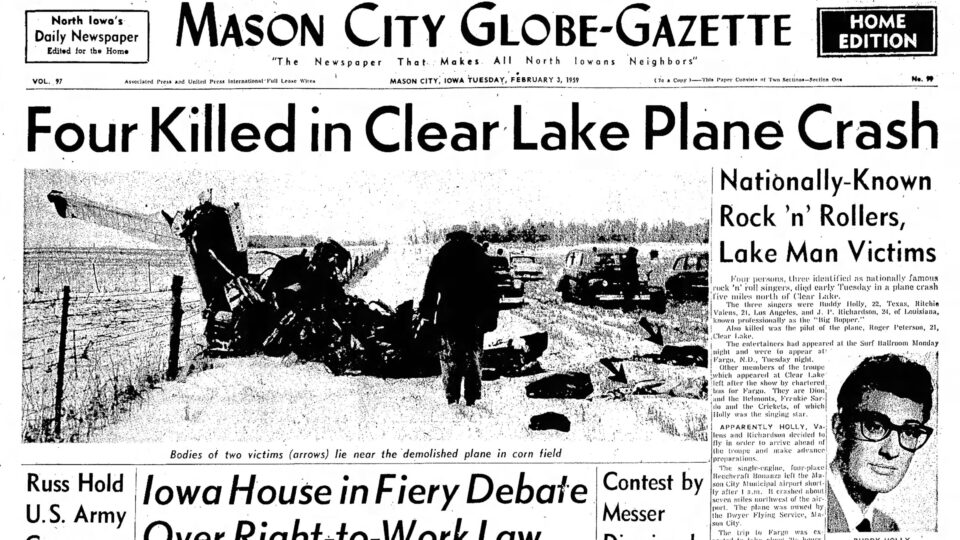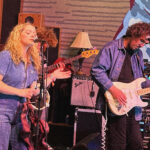Devastation from an Iowan cornfield ruptured America 64 years ago today. On February 3, 1959, rising artists Buddy Holly, Richie Valens, J.P. Richardson and their pilot died in a plane crash outside of Clear Lake, Iowa. This disaster, which took place in the middle of their tour, stunned fans around the nation.
Buddy Holly was in a tough spot. His manager had stolen from him, and after the break-up of his band, The Crickets, he needed money to support his pregnant wife and move to New York. To raise funds, Holly set off on the “Winter Dance Tour” with his band of Waylon Jennings, Tommy Allsup, and Carl Brunch, performing in venues throughout the Midwest.

They played with Richie Valens and J.P. “Big Bopper” Richardson. The tour bus had frequent heating issues over the course of the tour. Around Green Bay, Wisconsin, the group was downgraded to a decommissioned school bus. Frostbite, fever, and colds fostered during their long treks from ballroom to ballroom. Sporadic touring locations from the management company caused the musicians to dub it “the tour from hell”. Most of the driving was on snowed over two-laned country roads. The highway system wouldn’t be implemented until nearly a decade later.
Tour managers informed the weathered group that they had to play at the Surf Ballroom the night of February 2nd. Tired of the tour bus conditions, Buddy Holly, Waylon Jennings, and Tommy Allsup decided to fly to Fargo, North Dakota. They would meet with the other performers and drive to their nearby concert in Moorhead, Minnesota. Jennings switched with Richardson due to an illness caused by the tour bus, while Allsup lost his seat to Valens over a coin toss. Buddy Holly, Richie Valens, and J.P. “Big Bopper” Richardson prepared for their first relaxing transport of the tour.

Snowfall caused inclement weather for the region. Outside of Clear Lake, the owner of the Mason City Airport assigned 21-year-old pilot Roger Peterson to charter them, a “man who built his life around flying” (Jerry Dwyer, Aircraft Accident Report). At approximately 12:55 a.m., the plane took off. The Air Traffic control quickly lost its blinking headlight after it rapidly descended into the deep winter. Attempts to contact the plane failed. Around 9 a.m. the next morning, investigative teams found the wreckage in a field mere miles from the airport. There were no survivors. Four young men had lost their lives to an ill-fated flight. Even if they had made it out of Iowa, the after-accident report details that more intense inclement weather would have occurred. This information was not relayed to the pilot.
Heartbroken fans mourned the loss of these bright young men. They were on the cusp of greatness. Surviving tour members honored their legacy. Waylon Jennings, a bassist on Holly’s tour, became a Billboard-favorite and a major influence on the Outlaw Country genre in the ensuing decades. He referenced the tragedy on “Long Time Ago”, a song from his 1978 album I’ve Always Been Crazy”. “Don’t ask me who I gave my seat to on that plane, I think you already know, I told you a long time ago.”
Don McLean put an apt name to this tragedy in his paramount song “American Pie”. The song deals with America’s disillusionment surrounding the tragedy, and the artists who built upon the foundation left in their wake. McLean remembers that “something touched me deep inside / the day the music died.” While rock music endures to this day, its innocence was lost that cold night in Iowa.




